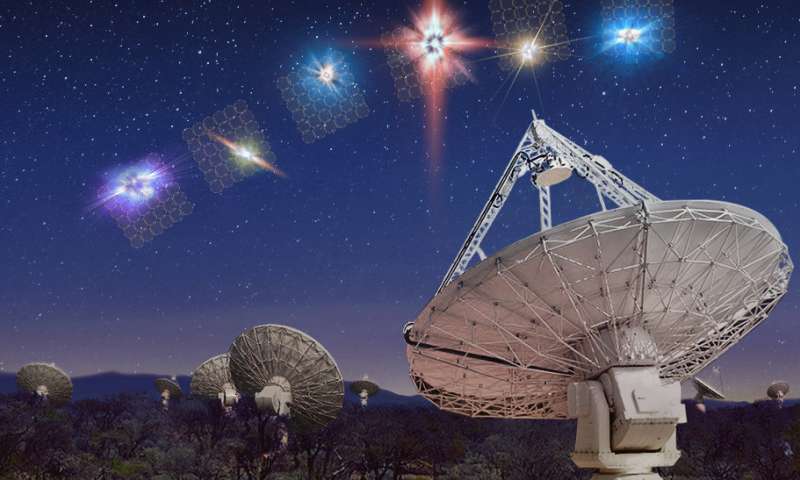
The Dark Energy Spectroscopic Instrument, or DESI, is being assembled for a five-year mission at the prime focus of the Mayall Telescope, to measure the spectra of more than 30 million galaxies and quasars.

Two instruments aboard NASA’s Spitzer Space Telescope – the Infrared Array Camera and the Multiband Imaging Photometer – have captured a spectacular image of the Cat’s Paw Nebula.

This confirms the current understanding of cosmological evolution - that galaxies and their associated black holes merge over time, forming bigger and bigger galaxies and black holes.

Astronomers have discovered two stars in a binary pair that complete an orbit around each other in a little over three hours, residing in the planetary nebula M3-1. Remarkably, the stars could drive a nova explosion.

The project is only the second, after NASA’s MESSENGER mission, to attempt putting a spacecraft into orbit around the solar system’s innermost planet and is one of the most technically challenging missions.

Astronomers have discovered 4 very large gas planets orbiting a young star only 2 million years old. Looks like we need a new model of planetary formation.

Australian researchers using a CSIRO radio telescope in Western Australia have nearly doubled the known number of 'fast radio bursts'— powerful flashes of radio waves from deep space.

Astronomers have discovered a titanic structure in the early universe, just two billion years after the Big Bang - a galaxy proto-supercluster, nicknamed Hyperion.

Hidden below the waves off the east coast of Australia, scientists have discovered a 'lost world' of epic volcanic peaks buried under the Tasman Sea, never before seen with human eyes.

Stephen Hawking's final work, which tackles issues from the existence of God to the potential for time travel, was launched on Monday by his children.

According to the model of US researchers, the entire Milky Way (and even other galaxies) could be exchanging the components necessary for life.

It's been a bad couple weeks in space. A week ago, technical difficulties forced engineers to put the Hubble Space Telescope's science mission on hold. Now, the Chandra X-ray Observatory is in safe mode, too.

A new computer model is revealing the unseen and often bizarre behaviors of particles streaming around rapidly spinning neutron stars, also known as pulsars.

Researchers determined hydrocarbons can form the type of complex chains that create Titan's orange-brown haze layers at temperatures as low as 330 degrees below freezing on Earth.

Scientists suggest fields of 15 metre-high shards of ice could exist on Europa's surface, posing a threat to future landing missions.